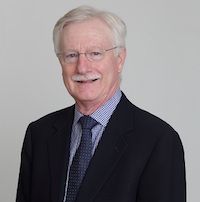Article
Explaining the Pathways of Alcohol Abuse
Author(s):
A look at the 3 stages of alcohol abuse and the state of mental health throughout it.

George F. Koob, PhD
With so much attention paid to the ongoing opioid epidemic, alcohol abuse remains a rampant and debilitating problem.
In a virtual presentation as part of the American Psychiatric Association (APA) Spring Highlights Meeting 2020, George F. Koob, PhD, Director of the National Institute on Alcohol Abuse and Alcoholism, explained how new research in the brain is painting a clearer effect on how alcohol impacts individuals.
“The argument is that we can take scales and different measurements for different domains and maybe, begin to accumulate information that will allow to us do more personalized medicine and individualized medicine in the form of diagnosis and treatment,” Koob said.
Koob said around 90,000 people each year in the US succumb to alcohol abuse.
“There has been a doubling since 1999 of alcohol related deaths and these are in line with reports that have highlighted trends and increased consequences of alcohol in women population,” he said. “And liver diseases are contributed to by alcohol and it correlates with poor mental health, and is commonly used to cope with symptoms and makes prognosis worse.”
On the other hand, Koob explained, mental health conditions can also complicate alcohol abuse treatment. Alcohol use disorder (AUD) causes an enormous amount of human suffering, loss of productivity and cost to the medical care system and the US economy.
There are 3 stages that make up the heuristic framework—a binge/intoxication stage, a withdrawal/negative affect stage, and a preoccupation/anticipation (craving) stage representing the domains of incentive salience, negative emotional states and executive function. These stages has allowed identification of key neurocircuits: basal ganglia, extended amygdala, and frontal cortex, respectively, that underlie addiction to alcohol.
Alcohol tends to overpower the reward function of endogenous opioids and dopamine, while driving incentive salience and engaging pathological habits through molecular and neurocircuitry neuroadaptations within the basal ganglia. Alcohol withdrawals can produce a negative emotional state—hyphedonia, dysphoria, anxiety, irritability, and sleep disturbance.
The negative emotional state that drives negative reinforcement might derive from the within-system dysregulation of key neurochemical circuits that mediate incentive-salience reward systems in the ventral striatum and from the between-system recruitment of brain stress systems in the extended amygdala.
Significant overlap in the engagement of circuits mediating brain emotional pain and physical pain may help explain the role of alcohol in "deaths of despair,” contributing to 15-20% of all drug overdoses, 26% of all suicides, and 50% of liver disease deaths.
“And there are issues that drive this response to alcohol,” Koob said. “We know that there is an increase in stress in the brain and parts of the extended amygdala and now, for withdrawal and we know that animals can reverse all of the science an symptoms of anxiety and stress like effects during alcohol withdrawal.”
One potential treatment for alcohol use disorder is dynorphin, which Koob said can reverse many of the parallel effects of alcohol and feeds it back within the activation of the system.
A total of 178 million people in the US use alcohol, with approximately 14.5 million people suffering from AUD. Alcohol-related death doubled between 1999-2017, with the increases greater in women than men during this time period.




